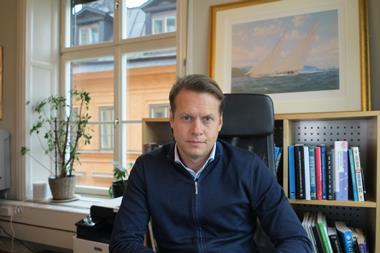Austrian provident funds – Vorsorgekassen – are endorsing a long-awaited reform of the pension system in the direction of a longer custody of savings and flexible investment limits.
The consultancy Mercer recently underlined three main changes to the system, including keeping savings in Vorsorgekassen for a period of 10 years from the current three, waiving guarantees on pension benefits and expanding investments limits.
“We welcome Mercer’s proposals to reform the Vorsorgekassen – we believe it will significantly improve the “New Severance Pay” (Abfertigung Neu) for employees and self-employed,” Martin Sardelic, chief executive officer of Valida Vorsorgekasse, told IPE.
Extending the period to keep the money in the funds from three to 10 years would ideally lead “many people to leave assets [in the Vorsorgekassen] until retirement in order to use it as a lifelong tax-free supplementary pension,” Sardelic added.
Under current rules, employees can withdraw savings from Vorsorgekassen after three years of contribution, or in the case of employment termination, except in the case of justified lay-off, unjustified early termination, and termination by the party entitled to the severance pay, with the exclusion in this case of a termination during part-time employment based on maternity or paternity rules.
Vorsorgekassen guarantee employees at least the sum of contributions paid into the funds as benefits.
“This guarantee lies [in the Vorsorgekassen] for a too short a period of time. That is why we have long been calling for the withdrawal option to be extended from the current 36 months to the retirement age,” Andreas Csurda, member of the management board of Allianz Vorsorgeksse, told IPE.
In case of illness, long unemployment or disability, employees should have the possibility to withdraw their savings earlier – for the contract value at that point in time, while guarantees can only mature at retirement age, he added.
The industry has long been calling to modernise the Vorsorgekassen system on different fronts. Andreas Zakostelsky, chief executive officer of the VBV Vorsorgekasse, considers the existing system “very good”, but in need of adjustments.
Extending the time to keep money in the funds is “the most important“ part of a reform. “In my opinion, savings should remain in the funds until retirement [age] in order to ensure long-term provision for employees. In the event of unemployment lasting three months or more, a regulation could be foreseen to give the possibility of an early withdrawal,” he told IPE.
Changing limits
In its proposals for a reform, Mercer has deemed feasible the implementation of the expansion of investment limits for Vorsorkeassen in the short term to look at the issue of guarantees “with optimism”, it said.
Mercer has compared two models, one based on limits according to the Company Employee and Self-Employed Pension Act (BMSVG) and the other with completely open limits.
The model based on the BMSVG foresees a maximum 40% allocation to equities and corporate bonds, 10% to real estate and 5% to alternatives. The model with open limits foresees a maximum allocation of 40% in equities, 25% in real estate and 15% in alternatives.
According to the model, Vorsorgekassen would achieve higher returns per year with open limits, facing the same risks of the BMSVG model with requirements.
“Compared to the current restrictions in the BMSVG, opening the investment limits gives the possibility of efficiency [to achieve] returns, ” said Angelika Delen, head of investment consulting and social responsibility investments at Mercer Austria.
The cornerstone to improve yields for Mercer is moving up the threshold for allocations in private markets and real estate to compensate for the loss of returns on bonds.
“Expanding the investment limits would expand our investment options, which is why we would have more alternatives to equities [and] bonds in the interests of our customers, especially during a challenging capital market environment”, Sardelic said.
“We can currently find [returns] in real estate, infrastructure, and technology investments, [but] here [there are] investment limits in the law – we have been pointing at this for years and we are trying to bring about a change as an industry,” Csurda said.
The limits to invest in OECD countries restrict the ability of the Vorsorgekassen to achieve good returns, too. “We are denied a large proportion of [investments] in high yields,” Csurda noted.
Adjusting investment limits could lead to an increase on annual returns on investments to the benefits of beneficiaries and, together with an extension of the period to keep savings in the Vorsorgekassen until retirement, the measure “clearly meets the precautionary nature of the system,” Zakostelsky said.
Mercer has also proposed a law update to intergrate sustainability, a topic that “is currently not mentioned in the BMSVG,” said Delen.
“We have firmly anchored sustainability in our [investment] strategy, as Allianz Pensionskasse we have been investing sustainably since the beginning of 2003. As an industry, we should gradually move towards sustainability,” Csurda said.
The possibility to waive guarantees on capital saved is “entirely understandable”, Sardelic said, adding that in this case a separate collective investment scheme without capital guarantee is necessary for employees and self-employed.
“In such an investment undertaking, an even more long-term, profit-oriented investment strategy would be possible, which – especially in the short term – leads to more risk from the customer’s point of view,” Sardelic said.
Abfertigung Neu
The Abertigung Neu is a one-off severance payment of benefits taking place upon termination of an employment relationship. It is the new version of the severance payment model, opposed to the Abfertigung Alt.
The Abfertigung Neu applies to employees whose employment contract was concluded after 1 January 2003. Under the new scheme, employers have to pay contributions to severance funds, or Betriebliche Vorsorgekassen.
An employer pays contributions together with social security contributions from the second month of an employment relationship. The Vorsorgekassen manage the severance payments of employees and pension contributions of the self-employed.
In the case of the old severance pay, Abfertigung Alt, employers had to save or invest the funds. Companies are required to choose a Vorsorgekasse. In companies without a works council, the employer picks the Vorsorgekasse, while in companies with a works council, the work agreement between the employer and the works council applies.
If an employer does not choose a Vorsorgekasse, the Vorsogekasse is then automatically assigned.






























No comments yet